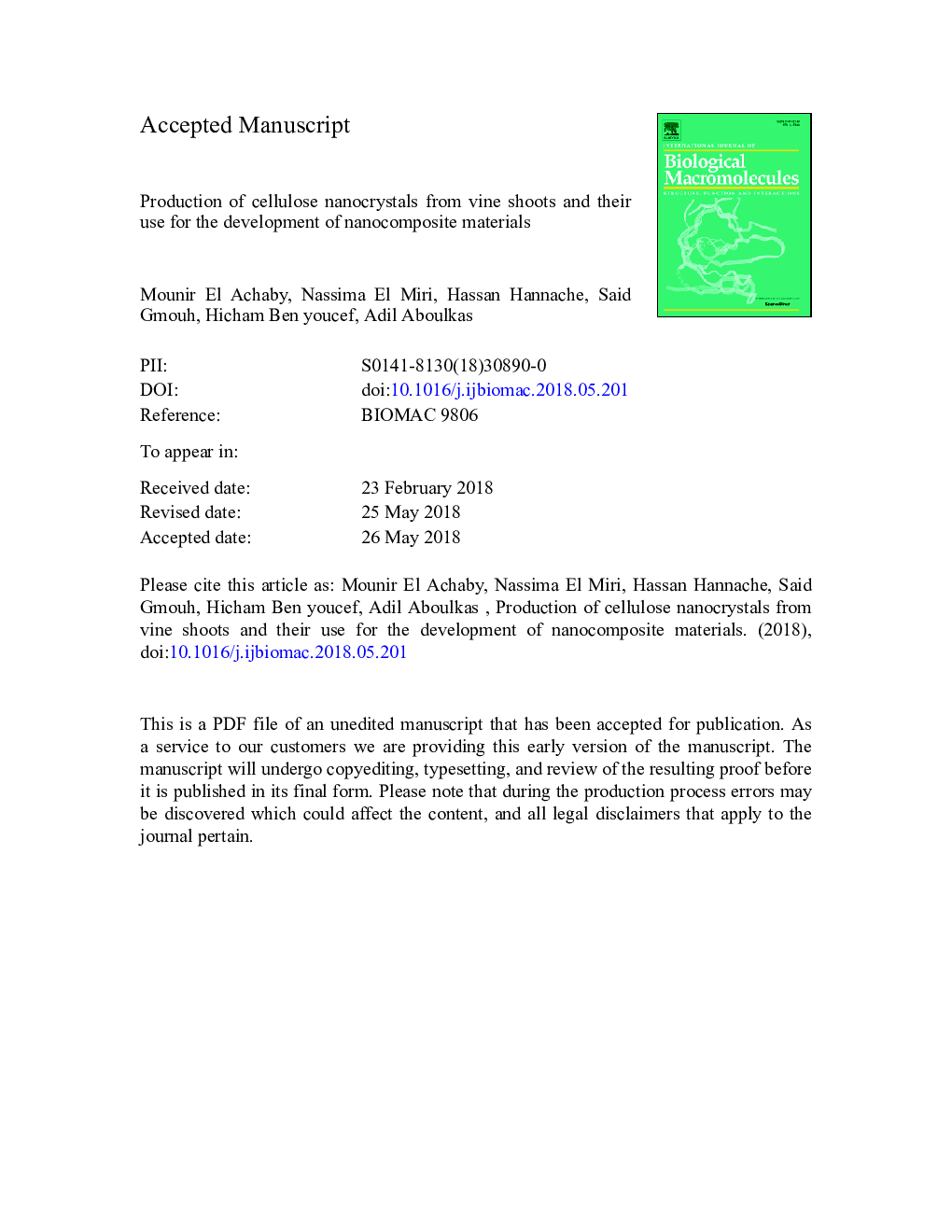| Article ID | Journal | Published Year | Pages | File Type |
|---|---|---|---|---|
| 8327015 | International Journal of Biological Macromolecules | 2018 | 38 Pages |
Abstract
In the present work, cellulose nanocrystals (CNC) were produced from vine shoots waste using chemical treatments followed by acid hydrolysis process. FTIR analysis confirmed that the non-cellulosic components were progressively removed during the chemical treatments, and the final obtained materials are composed of pure cellulose. AFM and TEM observations showed that the extracted CNC possess a needle-like shape with an average length of 456â¯nm and an average diameter of 14â¯nm, giving rise to an average aspect ratio of about 32. The as-extracted CNC exhibit a cellulose I structure with high crystallinity index (82%), as determined by XRD characterization. Importantly, the resulted CNC provide a higher thermal stability in comparison with CNC extracted from other resources, using the same extraction process. The isolated CNC's surface charge density was evaluated by XPS analysis and resulted in ~2.0 sulfate groups per 100 anhydroglucose units. In order to identify the reinforcing ability of the new extracted CNC, Carboxymethyl cellulose nanocomposite films were prepared with various CNC contents (1, 3, 5, 8â¯wt%) and their mechanical properties were investigated by uniaxial tensile test. The results showed that the as-extracted CNC displayed a higher reinforcing ability for nanocomposite materials.
Related Topics
Life Sciences
Biochemistry, Genetics and Molecular Biology
Biochemistry
Authors
Mounir El Achaby, Nassima El Miri, Hassan Hannache, Said Gmouh, Hicham Ben youcef, Adil Aboulkas,
